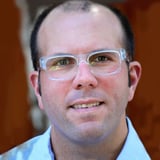Summary
Over the last few years, our simple five-step framework has made it possible to grow our research efforts' impact and scale. It's also helped us shift organizational mindset, establishing Research & Insights team as a trusted and desired partner in key business, product, and design decisions. Whether you do research with customers or need to map out your stakeholder universe to be most effective and increase your work's impact, we hope this framework will help you achieve your goals!
Key Insights
-
•
Balancing generative research with usability testing is a common challenge for researchers supporting multiple product teams.
-
•
Effective stakeholder identification involves prioritizing by influence and interest using a two-by-two matrix.
-
•
Most stakeholders often perceive research narrowly as usability testing or concept evaluation rather than broader product discovery.
-
•
Regular stakeholder interviews help uncover research needs, priorities, and timelines to build trust and plan work.
-
•
A consolidated research backlog assists in prioritizing requests based on importance, urgency, complexity, and available bandwidth.
-
•
Not all research requires direct researcher involvement; enabling PMs and designers with templates and unmoderated tools scales research efforts.
-
•
Outsourcing or vendor partnerships help handle high-volume or lower complexity research tasks effectively.
-
•
Maintaining a living research findings and recommendations tracker ensures research impact persists and avoids duplication.
-
•
Collaboration with customer-facing teams like Customer Success is critical for recruiting target users efficiently.
-
•
Sustainable research practices emerge over years but traction in new frameworks can start within six months.
Notable Quotes
"I’m drowning trying to create an understanding of our target audience for a new feature, but that leaves me no time for usability updates."
"How do we continuously provide value throughout the product development cycle without overindexing on just one type of research?"
"Maybe the person who is the loudest in the room isn’t the one you should manage closely as a stakeholder."
"Research has layers like an onion; we operate at multiple layers, from discovery to concept evaluation."
"We are not just trying to get a seat at the table, we want to get a voice at the table."
"Stakeholder interviews are our way of doing research on our stakeholders to understand what keeps them up at night."
"We enable PMs and designers to conduct research rigorously because they are already in contact with customers daily."
"Unmoderated tools can achieve 100% completion rates and rapid insights if designed thoughtfully."
"Our job is to make sure research conducted by non-researchers is objective, rigorous and unbiased."
"A research findings and recommendations tracker helps us keep findings alive and prioritized throughout the Agile delivery process."
Or choose a question:
















More Videos

"We made this move in January 2020 — our research and insights team moved out of UX but stayed within product organizations."
Nalini KotamrajuResearch After UX
March 25, 2024

"Not belonging anywhere meant that I had access everywhere."
Dean BroadleyNot Black Enough to be White
January 8, 2024

"Every day is a chance to check: is this how I want to be? This is a long-haul, marathon effort."
Denise Jacobs Nancy Douyon Renee Reid Lisa WelchmanInteractive Keynote: Social Change by Design
January 8, 2024

"People problems find their way to design ops because we’re known problem solvers and people run to us when morale is low."
Kim Fellman CohenMeasuring the Designer Experience
October 23, 2019

"Not every project needs to be responded to; not every RFP needs a proposal."
George AyeThat Quiet Little Voice: When Design and Ethics Collide
November 16, 2022

"A design system is done not when the style guide is launched, but when it positively impacts customer experience."
Nathan CurtisBeyond the Toolkit: Spreading a System Across People & Products
June 9, 2016

"Real estate transactions are among the top five life events in terms of emotional significance for people."
Greg PetroffThe Compass Mission
March 10, 2021

"If you don’t do local research before launching a product, you risk disastrous failure."
Chloe Amos-EdkinsA Cultural Approach: Research in the Context of Glocalisation
March 27, 2023

"We started analytics at the beginning so we could benchmark and compare old and new site performance."
Mackenzie Cockram Sara Branco Cunha Ian FranklinIntegrating Qualitative and Quantitative Research from Discovery to Live
December 16, 2022

















